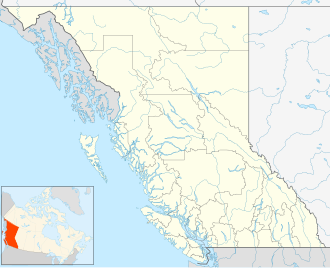| Adams Lake Provincial Park | |
|---|---|
 Adams Lake seen from the park | |
 | |
| Location | Kamloops Division Yale Land District, British Columbia, Canada |
| Nearest city | Kamloops, BC |
| Coordinates | 51°08′21″N119°36′32″W / 51.13917°N 119.60889°W |
| Area | 305 ha. (3.05 km²) |
| Established | January 8, 1988 |
| Governing body | BC Parks |
Adams Lake Provincial Park is a provincial park in British Columbia, Canada. It encompasses three distinct parks: Adams Lake (Bush Creek Site) Provincial Park, Adams Lake Marine Provincial Park (Poplar Point Site), and Adams Lake Marine Provincial Park (Spillman Beach Site).
Contents
- Adams Lake Provincial Park (Bush Creek Site)
- Adams Lake Marine Provincial Park (Poplar Point Site)
- Adams Lake Marine Provincial Park (Spillman Beach Site)
- See also
- External links
The parks are located east of Kamloops, and 30 kilometres north of Chase, or North of Kamloops and 48 kilometres east of Louis Creek. The closest communities, towns and cities to this park are Scotch Creek, Sorrento, Salmon Arm, Barriere, Chase and Kamloops.
